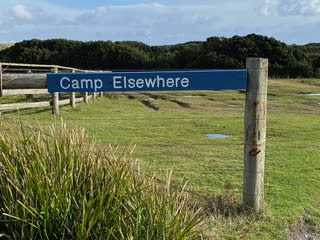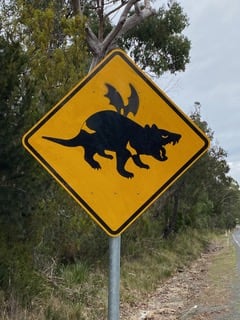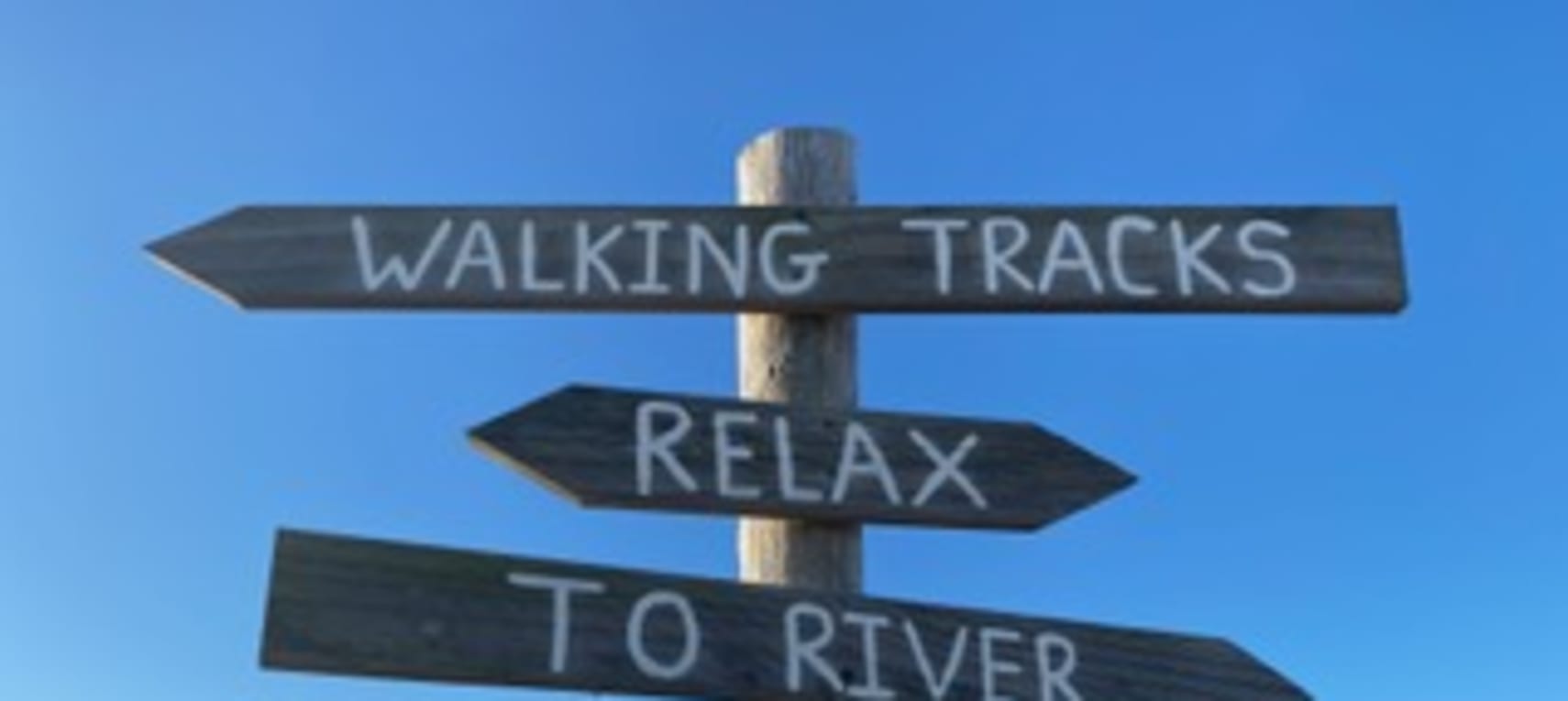writer and photographer DON DEFENDERFER
Tasmanian signs are like sentinels, telling us about a place, about its personality, its perspective and philosophy about life. Some signs project humour and some signs project an attitude. Some are political and some are religious.
Whatever their message, they are important as they are signs of the times we live in.
Around Tasmania, I have found unique signs, some of which convey a novel’s worth of ideas in just a few words. Some are like poems or haiku – they say precisely what needs to be said without wasting a word or syllable.
A good traveller is alert to the local nuance of a sign, as a way to learn about and let the personality of a place emerge. Does this town have a sense of humour? Is it authoritarian? Is it friendly or mean? Is it welcoming and helpful or a killjoy? Should I have a look around or just drive through?
As I have travelled this island I have learned to appreciate and seek out the signs that tell one about a place and about the times that place is living in. Some are defiantly living in a blissful past, and some are signposts to the future – where there are more rules, more don’ts than do’s. Whatever paradigm a sign speaks from, they are all interesting and revealing about how locals want to communicate with visitors.
I spotted a few on the west coast recently and they exemplify how well a few words on a sign can convey so much. Camp Elsewhere was a sign spotted near Temma; how masterful – two words communicating creatively and with a wry sense of humour – yes you can camp and are welcome, but no, not here.

At the southern boundary of Temma is a sign projecting a different attitude: Dob In A Hoon (with a Parks and Wildlife phone number below it). Clearly this sign says, in just four words, don’t take your off-road vehicle into the fragile dunes, and if you do, you will be classified as a miscreant, and you could be reported and fined.
In Corinna, one of the more remote places in Tasmania, at the end of the road (where one has to take a barge to cross the mighty Arthur River if one wants to continue north or south on the west coast), a sign sums up the resigned humour of the barge operator as he tries to communicate to wandering tourists how to alert him about crossing the Arthur:
- Drive up and down Car Park looking for Bridge.
- Park at Information Centre.
- Then park in Car Park.
- Drive to Kiosk and ask is Barge Operator in Bed, or how do you get across on Barge if there is no Operator?
- The Quickest and Easiest way is when you are ready, Park on road at STOP SIGN and Operator will come.
If you take the Corinna boat cruise down the Arthur River and stop at the docks at Pieman Heads, there is a good walk out along the river edge to the coast to see some of the wildest ocean waves in Tasmania. While walking you will pass a revealing sign – just two words, but quite efficient and purposeful (and, one would hope, with a self-effacing literary sense of humour): CAMPING GROUNND.
Not far from the camping sign is a sign tacked on a tree that is hung with a dozen or so gumboots. Naturally the sign says Gum Tree. These west coasters definitely have a sense of humour – probably the only way to survive the winters and more 1,500mm of rain per year.
In the far north-east corner of the state, near Mt William, I came across a road sign that said Slow Point. I’m still not sure what it means. Does it mean that this is the slow point of one’s journey? Does it mean one needs to slow down to understand the point and meaning of life? It’s a mystery.

Signs have long-influenced travellers, evidently first being used in Europe during the Palaeolithic age, about 20,000 years ago, and were spiritual in nature symbolism. However, one could argue that Aboriginal cave paintings and rock art around Australia (which can still be easily seen at Uluru or Kakadu) dating to more than 30,000 years, is when signage began in Australia.
Rare rock art or rock markings (engravings and paintings) can be found around Tasmania in rock shelters or near the coast, with the oldest dating to about 14,000 years. These motif engravings often show ovals, dotted lines and cupules (circular, man-made hollows on the surface of a large rock or a rock slab), and they appear to be depicting things like bird tracks, outlines of hands or human figures. While the specific meaning of these first signs in Tasmania is unknown today, researchers speculate that they may have been expressions of art or indicators of directions, stories, ceremonies or resource boundaries.
A row of petroglyph cupules (possibly indicating symbolic emu tracks), incised into huge granite boulders that I have hiked to in the Blue Tiers (nalewalkener) is immensely intriguing and continues to haunt me as distinct signs of the past which we are still learning to interpret.
. . .
Not long ago a friend sent me a photo of a sign that he’d seen on chalkboard at a café in Woodbridge:
WELCOME:
TASMANIA IS NOT AN ISLAND
AT THE BOTTOM OF
THE WORLD …
TASMANIA IS AT THE CENTRE
OF THE WORLD …
AND THE UNIVERSE
SPINS AROUND IT.
What a surprise to find such wise words that so succinctly sum up my own world view.
I will continue to travel around Tasmania and enjoy the creative signs we live amongst – they help shape who we are and our perceptions of this rogue island.
Keep your eyes peeled and take in Tasmania’s diverse and curious personalities. Never take a sign for granted – they may still be here 50,000 years later, as signs of the times.
Don Defenderfer is a native of San Francisco who once went on a holiday to Alaska where he met an Australian who told him to visit Tasmania. So he did, and while here he met a woman. That was 40 years ago. He was state coordinator for Landcare for many years, a job that allowed him to be inspired by not only the beauty of the Tasmanian landscape but by the many people that are trying to repair and renew it. He has a Masters Degree in Social Ecology and a Bachelor of Environmental Studies with a minor in writing. He has published three volumes of poetry, and his work has appeared in newspapers and periodicals, including The New York Times and The Australian. Two volumes of collected essays and poems, "Tasmania: An island dream" Parts 1 and 2, can be bought through the Forty South Bookshop.







